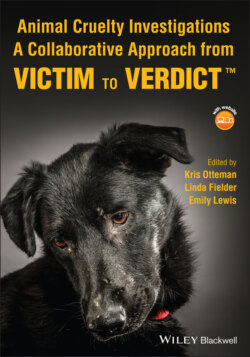Читать книгу Animal Cruelty Investigations - Группа авторов - Страница 164
5.5 Ask Clear and Direct Open‐Ended Questions
ОглавлениеAfter you have reviewed all materials available and determined the goals of the interview and the information you are seeking to gain from the subject, you may prepare your questions. When possible, questions should follow the timeline of the case, though in some cases questions may address details that happened even before the timeline of events relevant to the crime. For example, you might begin by asking about how a witness first met the suspect and the nature of their relationship prior to any of the events you are investigating. You want your subject to feel as comfortable speaking with you as possible by the time your most important questions are posed to them. Facilitate this by allowing the subject to give you some background in their own words and without interruption.
Interview questions should be open‐ended. Open‐ended questions are ones that cannot be answered with “yes” or “no.” They require an answer, as well as an explanation, and will supply you with important details to consider in your investigation. Open‐ended questions draw out information. They also do not feed information to the subject by telling them in advance the information you are seeking.
Consider the following examples of an interview following a report of a man kicking a dog:
Example A
Interviewer:
“Did you witness the suspect in an angry and intoxicated state yelling at and abusing the dog in the parking lot?”
Witness:
“Yes.”
Interviewer:
“Did you see the suspect kick the dog in the parking lot last Wednesday?”
Subject:
“No.”
Example B
Interviewer:
“What happened in the parking lot between the suspect and the dog last Wednesday?”
Witness:
“I was leaving my shift at the bank, and I saw a man and a woman across the parking lot. The woman was crying, and the man was grabbing at her little brown dog's leash. The man fell down twice and was unsteady on his feet, but he managed to get the dog away from her, falling to the ground a third time in the process. The man was yelling at the dog. The woman was crying. She got into a black car and got on her cell phone.”
Interviewer:
“What happened next?”
Witness:
“The man stood up and picked up the dog by the leash. It was hanging a couple of feet off the ground and making an awful sound. He tried to kick it but missed and then he slammed the dog down against the pavement at least three times. The dog got away from the man and kind of crawled back to the woman in the car and she picked it up and drove away.”
Example B began with open‐ended questions and led to the witness supplying the investigator with some valuable details they can follow up on:
While the man attempted to kick the dog, he failed in this and actually committed other cruel acts toward the dog (hanging, slamming).
Who was the woman with the dog?
Who did she call on her cell phone?
Because the witness disclosed that they work at a bank, the investigator can follow up with the business to review security footage of the parking lot on the date and time of the incident.
It is important to note that this witness is not going to know why the suspect was harming the dog, so it is not necessary for them to speculate on this. The value of this witness is their detailed account of what happened and not why. The statement above should serve as a foundation for the interviewer to pose additional, more detailed questions about the length and type of leash the witness saw, any particular words they could hear the suspect yell, and who else might have been present in the parking lot or seen this incident through the bank window.
You should not expect that any one interview will provide all the information you need to finalize an investigation. On the contrary, the most valuable interviews provide information that guides you to more sources of information and additional witnesses. In the case above, knowing the witness worked at a bank that most likely collects round‐the‐clock surveillance video footage pointed the investigator to a recorded account of the incident for analysis.
